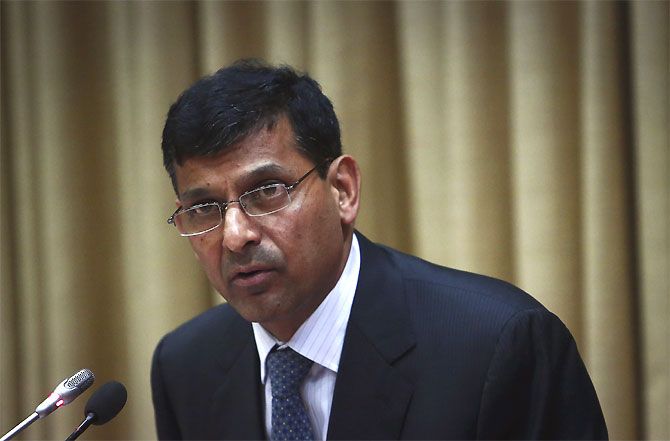Central bankers are falling behind the curve as real interest rates continue to rise, say Abheek Barua and Bidisha Ganguly.

While the debate continues on whether India's gross domestic product (GDP) estimates correctly reflect the reality on the ground, one has seen very little comment on the sharp moderation in the nominal GDP growth.
GDP growth at current market prices fell to 10.5 per cent in 2014-15 from more than 13 per cent in the previous two years.
The GDP deflator, the most comprehensive indicator of inflation in the economy, fell to 3 per cent in 2014-15 and was close to zero in the last quarter of that year.
The Reserve Bank of India, having cemented its position as an inflation hawk, is slow to recognise the serious issues that can be brought on by keeping real interest rates high in the face of disinflationary pressures.
Rather, it chooses to worry about inflation likely to be brought on by the predicted shortfall in the monsoon rains.
Deflationary pressure is currently evident across Asia and India is not immune to it.
In a recent report tracking the performance of Asia Pacific economies ("Asia Economics: Five-step Solution to Manage Asian Deflation Risks", June 2015) Morgan Stanley (MS) states that "elevated real rates due to intensified deflationary pressures remain the key headwind to domestic demand".
Countries across the region have eased both fiscal and monetary policy and yet, according to MS, the "pace of policy response continues to lag the pace of disinflation".
This has the potential to spiral out of control as demand continues to weaken and further affects the pricing power of companies.
With capacity utilisation already low due to the downturn in exports, a contraction in domestic demand would kill any capital expansion plans of the corporate sector.
The corporate sector suffers as corporate revenues stagnate, making it even more difficult for them to pay off their high levels of debt carried over from the days when the business cycle was strong.
Central banks are reluctant to reduce interest rates drastically, as they fear greater investment in unproductive sectors and a further rise in non-performing loans (NPLs).
The MS report draws an interesting contrast between the approach taken by the US in dealing with the 2008-09 crisis and that taken by Japan in the 1990s. Policymakers in Japan were slow to cut real rates and clean up the banking system.
The US, in contrast, encouraged recognition of NPLs in the banking system and cut real rates aggressively, putting the economy back on a growth cycle.
Asian central banks are taking the cautious approach followed by Japan, fearing job losses if a radical clean-up of the banking system results in a sharp slowdown in credit and GDP growth.
Another observation relevant to Asia is that deposit rates tend to play a significant role in influencing the overall cost of capital, and the transmission from central bank policy rates to deposit rates is often impaired.
Competition for deposits and high loan to deposit ratios prevent deposit rates from falling even when the central bank is cutting policy rates.
This suggests that policy rates might need to be cut more aggressively to avoid falling behind the curve.
Of course, the importance of structural reforms in encouraging investment and growth cannot be played down.
Interest rates alone can hardly do the trick if government policies remain sclerotic.
Here, the report suggests that in economies that are facing ageing populations (that is, most of Asia), reforms are needed to move jobs away from low-end manufacturing and create opportunities at the higher end of the value chain.
In India, where demographic trends are the opposite and per capita incomes much lower, structural rigidities need to be addressed in order to support higher investment.
Some issues that come to mind are labour laws, difficulty in getting clearances and implementation bottlenecks in infrastructure.
Further, policymakers should not be shy of supporting aggregate demand through fiscal transfers to distressed segments of the population, whose incomes have been affected by deflation and job loss.
Abheek Barua is chief economist, HDFC Bank. Bidisha Ganguly is Principal Economist, CII









